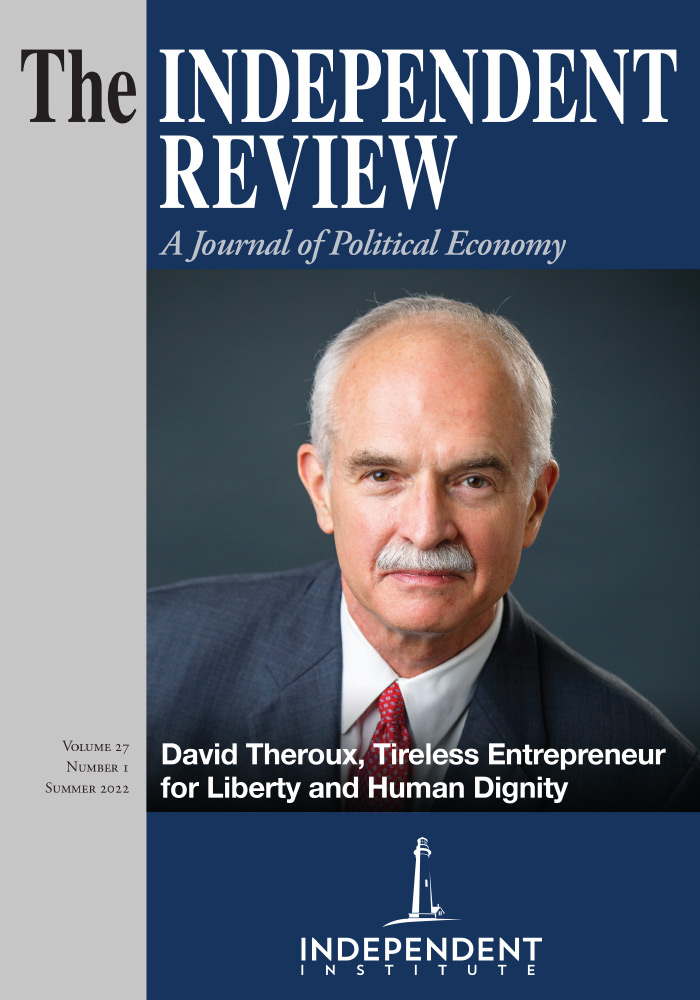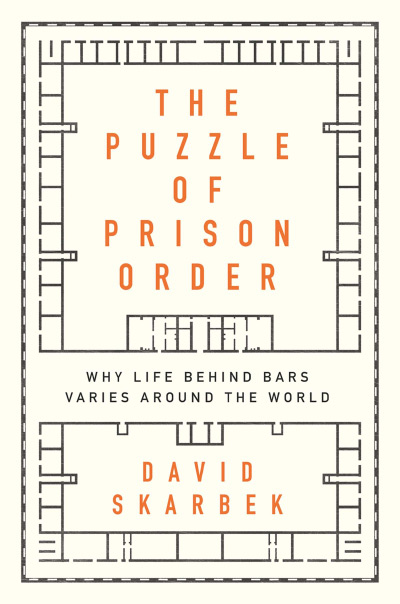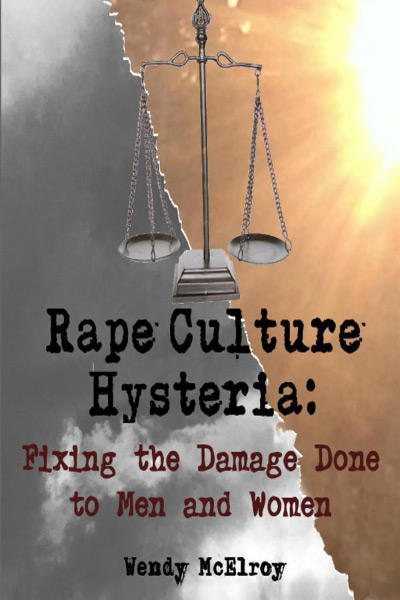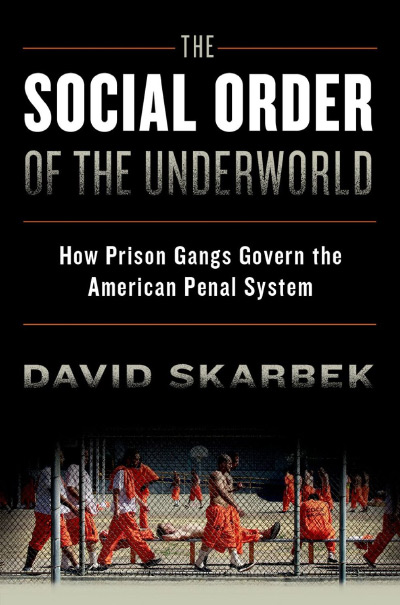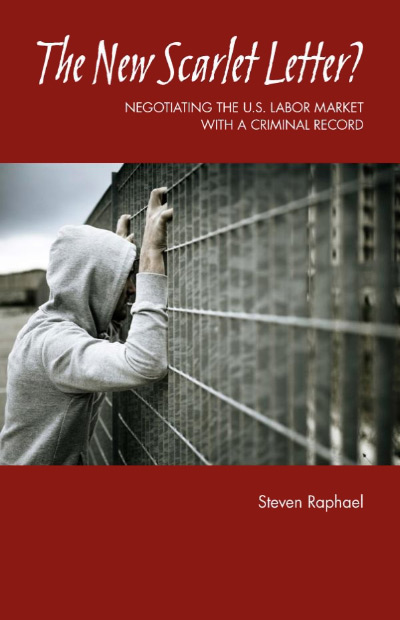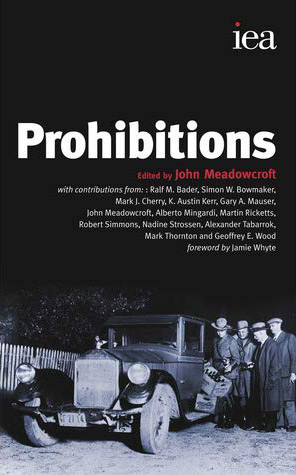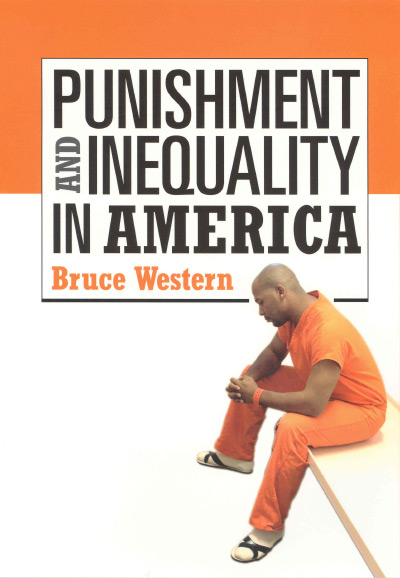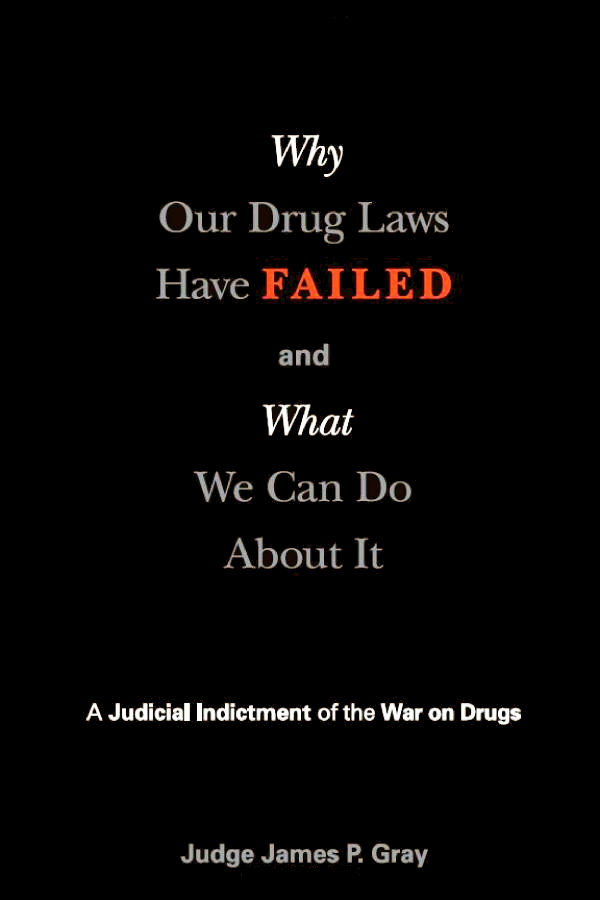Devoting effort to explain prison order may sound counterintuitive to some. After all, in some sense, no more orderly place can exist. Everyone is behind bars and every little aspect is under control; there is a scheduled time for food, sunlight, and showers. Guards can easily access your private space for routine searches, no warrant is required. If you had to guess, you would probably assume that every cell is quite similar. There is some sort of bed for each occupant, perhaps a sink and a toilet. Iron bars or a reinforced door delimiting one side, luckily a window with at least a bit of light in the other. What is there to be explained? Quite a lot, in fact. David Skarbek puts to rest this misconception while he explains (as suggested by the subtitle) why life behind bars varies around the world.
Prison order of course matters to prisoners themselves, but it should also be an issue that concerns communities surrounding jails and society as a whole. Importantly, depending on how order is achieved, prisons can become severely violent places, giving power to gangs, factions, and organized crime that extends far beyond the limits of the facility. The reader will find that this is a book that will be useful to economists, criminologists, and sociologists, but also relevant and of interest to policymakers and laymen. To accomplish his explanatory task, Skarbek develops a fascinating merger of detailed sociological studies of prisons and economic theory.
Data are drawn from multidisciplinary sources, including government reports and studies from the fields of criminology and sociology. These include information such as the number of prisoners and the official capacity, the prisoner-to-guard ratios, level of security, and the types of crimes committed by the incarcerated. Additionally, first-hand sources provide rich descriptions of everyday life directly from the “man on the spot”; interviews with prisoners, guards, and administrators add up to a large share of information. This multidisciplinary array of sources allows Skarbek to reach beyond the limits of official statistics, giving details about the operation of black markets, drug use, the degree of violence and safety, how groups interact, and how their rules for interaction are formed.
For sorting and analyzing the raw data, Skarbek employs an innovative toolkit: economics. In his argument, life in prison varies around the world, first, because initial conditions vary. Some prisoners will have less harsh sentences simply because they will be incarcerated in facilities that have more resources and are better managed—but that is only one side of the issue. In turn, how prisoners react and interact with the environment they have been put in complements his story.
By looking at the constraints and incentives that prisoners face, he can explain the formal and informal institutions that emerge to provide governance, separated into four main categories under Skarbek’s scheme. To present his case, Skarbek takes the reader on a journey through prisons around the globe: Bolivia, Brazil, the United States, Nordic countries, and England. Each prison then serves as a case study of each of the four types of governance.
First and foremost, the question to be asked is “do officials provide the governance that prisoners want?” Official governance is when the prison administration creates and enforces the rules, providing security, food, and structure for daily life. In Nordic countries, official governance is notoriously and exceptionally thorough. Staff takes care of almost everything and there is a high number of prison guards. Prisoners have little to nothing to worry about, and so they have no reason to develop their own rule—official governance is sufficient. If we allow official governance to be the reference point, divergence from this point becomes a fruitful source of change to explain why prisons differ.
When official governance is not sufficient, however, inmates have incentives to create additional rules, as much as their resources allow. Co-governance is when prisoners complement and fill the gaps of existing rules, either because they are not being enforced or because they do not cover aspects of social interaction that are important to them. In different degrees, prisoners and guards deploy a joint effort to govern the system.
A moderate version of co-governance happens in the Los Angeles County Jail system, which has an exclusive housing unit for male gay and transgender prisoners, known as the K6G unit. Due to lawsuits and close oversight by external organizations, the unit was created in 1985 and has been a politically sensitive issue ever since. Administrators of the K6G unit are much more invested in providing adequate resources than those managing the general population. In addition, since the population is small and has a very high recidivism rate (between 90 and 95% of prisoners in this unit are expected to return at some point), officials know each prisoner. This small-scale operation allows for relationships based on trust, in a decentralized fashion. For instance, “House Mice” as they are called, become intermediaries, letting deputies know if there is a shortage of supplies, and helping organize daily routines—but other than that they do not tend to have power over their fellow prisoners.
A much larger degree of co-governance happens in some Brazilian jails, where there is severe short staffing and overcrowding. Prisoners themselves must cook, clean, provide uniforms, medicine, and even handcuff and escort other incoming prisoners. Representatives are usually elected (although sometimes born as “natural leaders”) by the prisoners to speak and negotiate on their behalf. They have managerial powers over a cell aisle or a whole block that is often formally recognized by the official administration.
When official governance is nearly absent, self-governance results. A prison becomes a dynamic city surrounded by walls, such as the San Pedro prison, in Bolivia. Cells can be bought or rented, the more expensive ones including appliances and other conveniences. Daily life supplies, including food, clothes, cigarettes, books, and other utensils are sold in the prison market. Officials merely regulate who and what gets in and out—and even that may be controlled to some extent by bribery.
Minimal governance is the most peculiar of all, even for prison standards. It results from prisoners having neither the incentives, nor the resources, to fill the governance vacuum that exists. This case is illustrated by the Andersonville Camp, a war prison during the American Civil War—but a Soviet gulag during the Siberian winter would probably fit the description as well. Captured soldiers remained arrested for such a short period of time that there was no reason to create rules, nor a common group of people to agree upon them—the rate of change in the prison population was dramatically high. No meaningful governance could exist. Both a cause and a consequence is the fact that these prisoners had extremely harsh, dangerous, and miserable lives.
What else can further explain differences? After all, the K6G unit and Brazilian jails are both under the co-governance umbrella but are remarkably unalike. Skarbek argues that another source of variance is size. If prisons are small, reputation is easy to track. I know that John owes Bob a pack of cigarettes because he helped him in a conflict with Derek; everybody knows that Chris is a “rat” and that one should not tell any information to him. Small scale relationships are based in trust. As facility size increases, from hundreds to thousands, prisoners must rely on alternative, more centralized methods to mediate social interactions—prison gangs enter.
Skarbek argues that gangs work as a special kind of club. Instead of keeping track of every single individual, relationships develop in terms of collectives, usually along racial or ethnic lines—intuitively, the color of one’s skin is easy to identify and particularly hard to change. Tattoos serve the similar purpose of labeling and signaling loyalty. In opposition to the theory that prison gangs are “imported” from the streets of the outside world, he argues they are born within prisons, at least in California’s case. Because they become liable for their members’ actions (even after time is served), eventually they reach the streets, not the contrary. Rules of behavior are designed and monitored by gangs themselves; if a member acts unduly, punishment and corrective measures are commonly applied by the leaders of one’s own gang, because it affects the reputation of everyone within the group. Simple trust and reputation are substituted by the threat of violence in governing relationships.
In addition to initial governance conditions and size, the third relevant variable is the amount and characteristics of previous as well as future connections among prisoners in the outside world. In England, prisoners serve their time very close to home. In Los Angeles, prisoners who wish to be housed in the K6G unit must undergo a peculiar interview with deputies to evaluate if the prisoner is “really gay”, given the concerns about the welfare and safety of the segregated population. The unifying feature of these two examples is that prisoners share experiences and demographics from the outside world. They often know each other, have friends in common, frequent the same bars, and live in the same neighborhoods. They share customs and cultural backgrounds. When released, it is likely that they will return to the same communities, so that reputation will continue to matter after their sentences are over. Further, with relatively more homogenous groups, social cohesion increases, reducing the costs of transaction and facilitating decentralized governance.
While his main arguments should hold regardless of the specific contextual setting (e.g., that demand for extra-official governance increases as official governance decreases), some auxiliary inferences may be limited elsewhere. For instance, Skarbek’s narrative of prison gangs seems to be mostly drawn from his previous work considering California’s jail system, where division along racial lines is common (2014, The Social Order of the Underworld: How Prison Gangs Govern the American Penal System, New York: Oxford University Press). But it does not have to be that way: Brazilian prison gangs are not divided along racial lines; in Northern Ireland they are divided by politics and religion. Governance theory explains a good part, but it is not the whole picture. As Michelle Butler, Gavin Slade, and Camila Nunes Dias (2018, “Self-Governing Prisons: Prison Gangs in an International Perspective,” Trends in Organized Crime, no page) argue, deprivation and importation theories are also important for “explaining differences in the number of gangs and their ability to monopolise informal governance.” Thus, limitations of generalizability to other countries and legal systems should be considered. Albeit distinct from each other, all Skarbek’s case studies are nonetheless from Western democracies, rich or poor. Granted, this limitation is also a potential avenue for future research.
The main contributions of the book may be different depending on who is asking. To criminologists, Skarbek’s take is a promising alternative hypothesis for the “importation theory” of prison gangs. To sociologists, it may be the lesson that putting emphasis on the institutional context—governance, size, and transaction costs—yields fruitful ideal types that can serve as guides for future research. To policymakers, the main lesson is the rule “small is better.” Smaller jails reduce the power of gangs; they are less violent and easier to monitor.
Finally, his work reinforces two methodological ideas for social sciences in general and economics in particular. It shows that good economics can exist and prosper outside of fancy theoretical models and quantitative analysis. Whereas some theoretical works in the same vein offer interesting functionalist explanations but fail to derive testable hypotheses; others, when facing testable hypotheses, fail to actually test them because existing data do not conform to the necessities of regression models. Skarbek provides a way out, opening important new avenues for research. By building on extensive qualitative data from multiple case studies, he is able to compare prisons that are similar in many aspects but differ in the variables of interest—level of state governance, size, and demographics. More broadly, the book is an outstanding example that the facts of the social sciences are “theory-laden.” No doubt that this is an empirical work; but the conclusions are possible because theory guides its interpretation. Applying a new theoretical source of light helps to illuminate facts once unknown to the observer. It allows for one to extract new knowledge from the same data.

